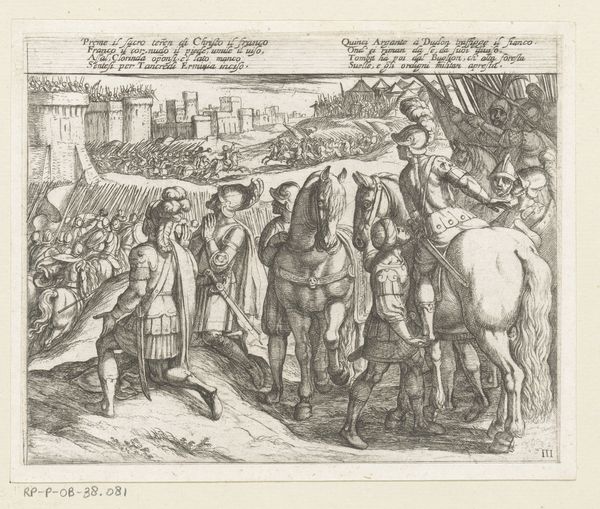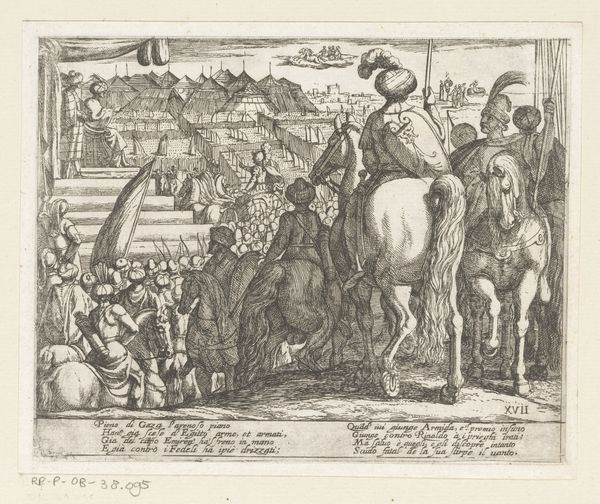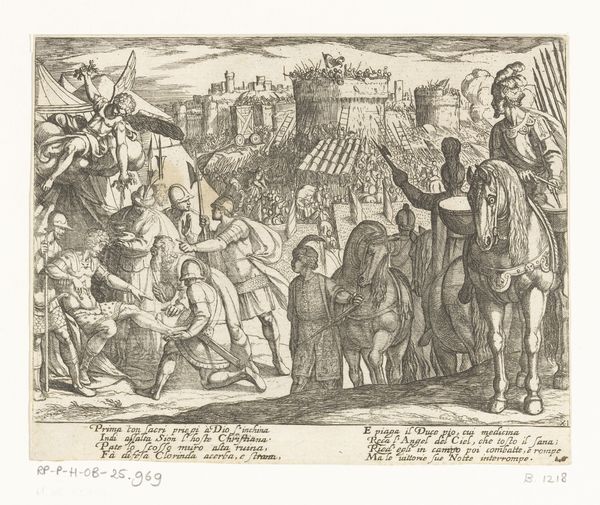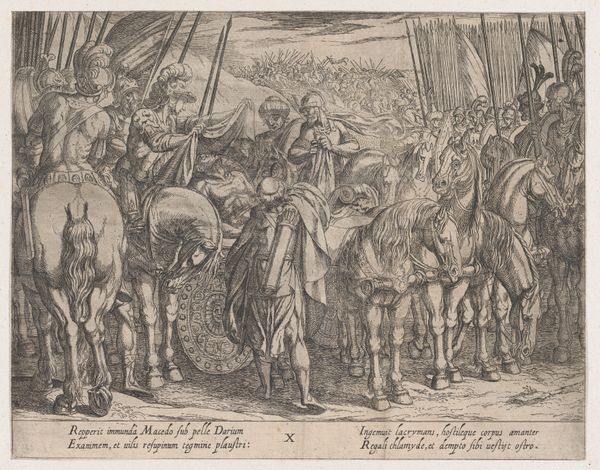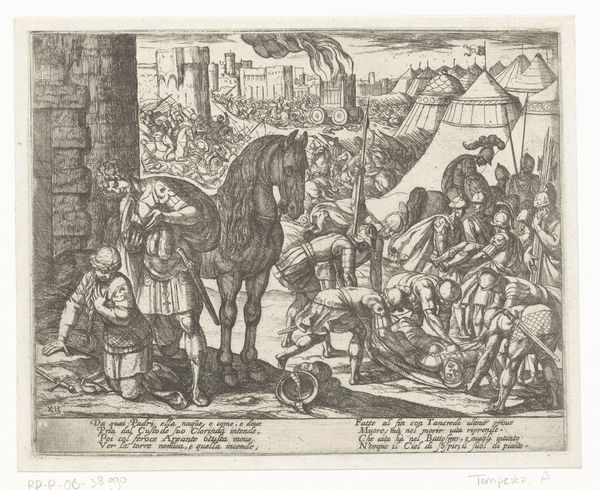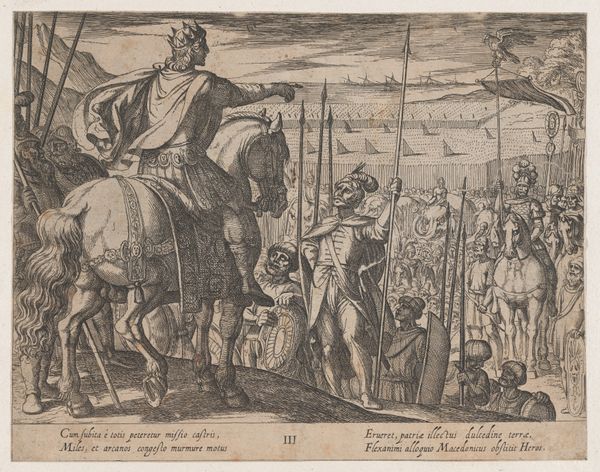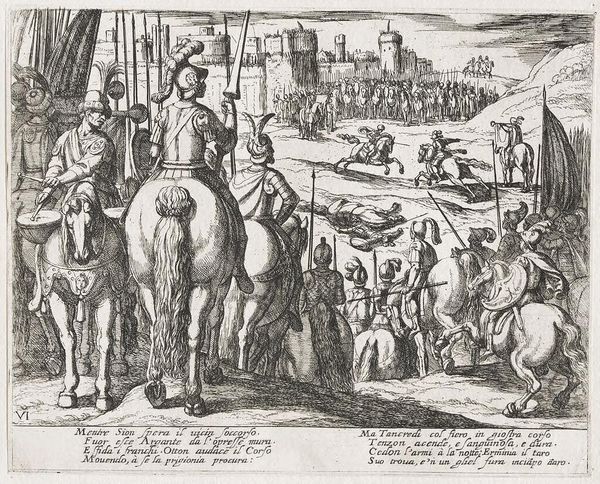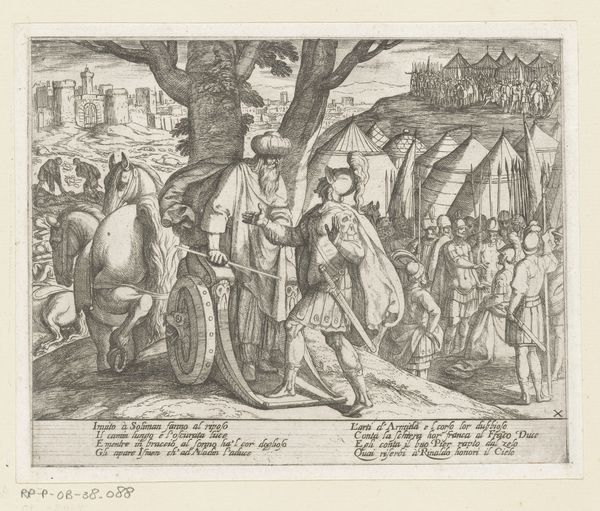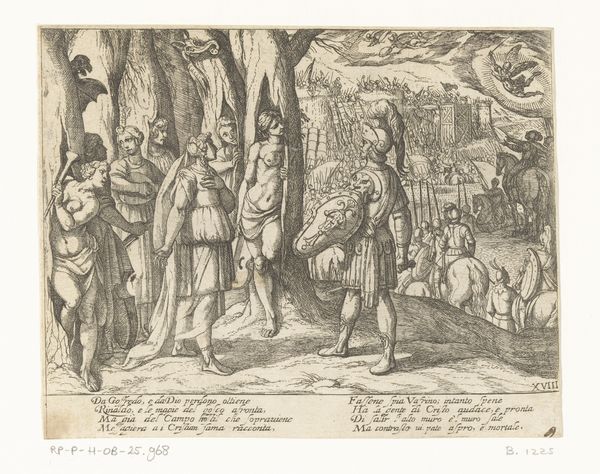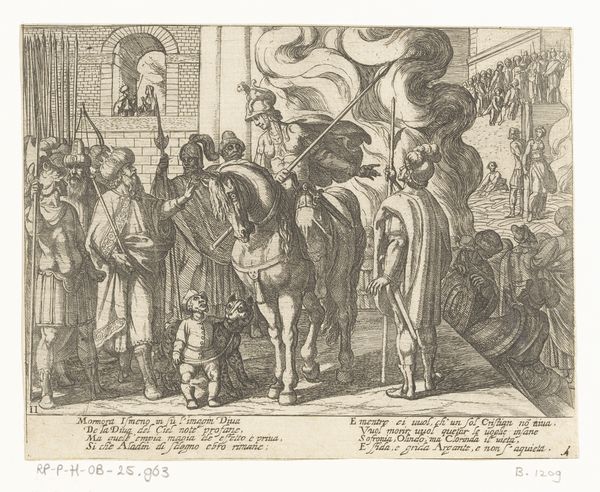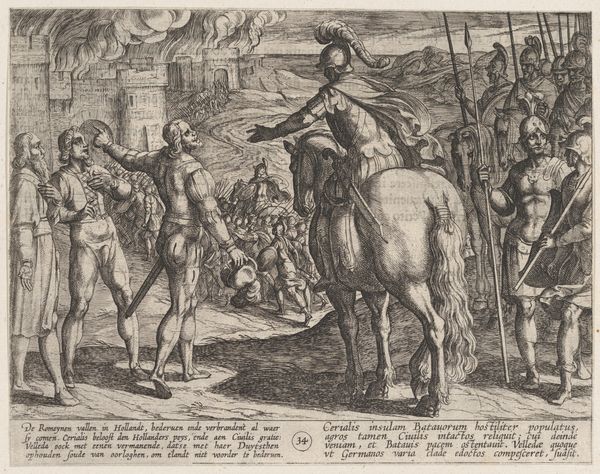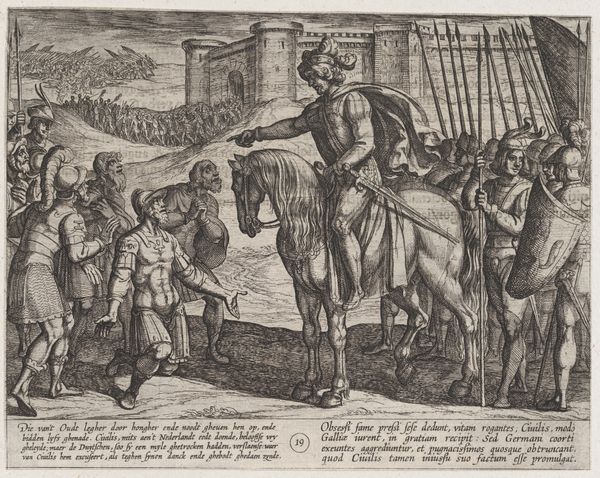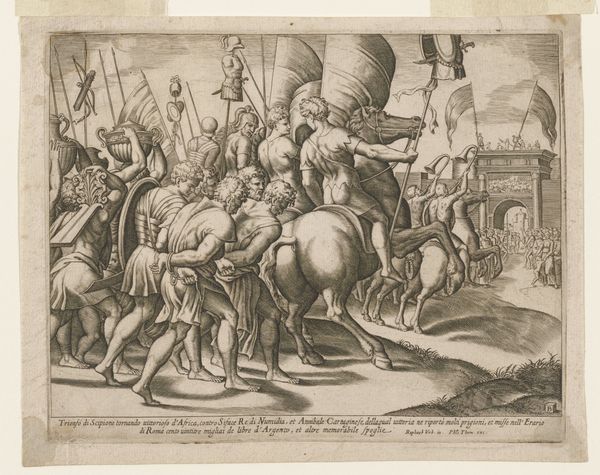
Illustratie bij Canto VI van Tasso's 'Gerusalemme Liberata' 1565 - 1630
0:00
0:00
print, engraving
#
baroque
# print
#
pen illustration
#
old engraving style
#
landscape
#
figuration
#
line
#
pen work
#
genre-painting
#
history-painting
#
engraving
Dimensions: height 145 mm, width 184 mm
Copyright: Rijks Museum: Open Domain
Curator: This dynamic engraving is an illustration to Canto VI of Tasso's "Gerusalemme Liberata," likely created between 1565 and 1630. The artist we attribute this work to is Antonio Tempesta, and it currently resides at the Rijksmuseum. What jumps out at you? Editor: Immediately, I'm struck by the sheer density of figures. It's almost chaotic, but with a distinct sense of movement and depth—like a film still teeming with historical significance. You can practically hear the clashing of swords. Curator: Precisely. The artist uses very fine, almost frantic, lines to create a sense of a large battle scene. Note how the detail diminishes in the background, creating an illusion of vastness. And the contrast of light and shadow pulls us right into the heart of the conflict. Editor: I’m particularly drawn to how it captures the era's complex relationship with war. "Gerusalemme Liberata" is an epic poem steeped in the history of the Crusades, framing them as these heroic endeavors, yet the scene here betrays a level of violence that cannot be sanitized. Who gets valorized and whose stories get erased through this heroic framing? Curator: Absolutely, it’s not a romanticized battle scene as much as a raw one. We see bodies strewn across the landscape. Yet the artist imbues certain figures on horseback with undeniable heroic posture. Editor: Exactly! It seems to highlight that tension between glory and brutality inherent to conflict, asking us, even centuries later, to grapple with those moral ambiguities, and how those dynamics impacted individuals, particularly women, from various standpoints within that society. This wasn’t some distant pageant; it impacted their material existence in violent and real ways. Curator: It really makes you consider perspective, doesn’t it? Are we celebrating victory, or lamenting loss? I think Tempesta does a great job here not making a single judgment, rather placing all these details before us so we are left wondering. Editor: Leaving us to ponder not just what happened, but also the long shadow of those power structures on the narratives that are still being formed today. Curator: A somber note to end on, but I feel you are right. History may have ended, but the telling never does.
Comments
No comments
Be the first to comment and join the conversation on the ultimate creative platform.
